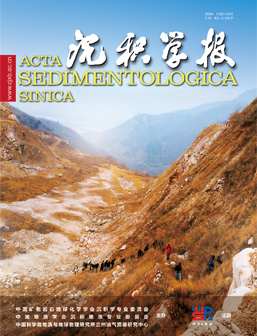Characteristics of Clay Minerals and thier Climatic Significance in Luojiawopeng Formation, Songnen Plain
doi: 10.14027/j.issn.1000-0550.2025.001
- Received Date: 2024-11-18
- Available Online: 2025-03-04
-
Key words:
- Key words: clay minerals /
- climatic significance /
- Luojiawopeng Formation /
- Songnen plain
Abstract: Abstract: [Objective] The Luojiawopeng Formation is a set of purplish red sand and gravel accumulation strata in the Lower Pleistocene Series in the southeastern margin of Songnen Plain. The clay mineral analysis of this formation is conducive to understanding the paleoclimate characteristics in this region and defining its stratigraphic age. [Methods] Whole rock geochemistry, XRD, SEM and HRTEM analysis of clay minerals in Luojiawopeng Formation were carried out to reveal the composition and transformation characteristics of clay minerals in this formation. Comparation were taken on the aspect of clay mineral composition, between the red clay in the Chinese Loess Plateau and Luojiawopeng Formation. [Results] The clay mineral composition of Luojiawopeng Formation is dominated by kaolinite (content of 57%~73%), followed by illite (ranging from 25% ~ 41%) and the content of biotite /vermiculite mixed layer minerals is the least (average 1%). Kaolinite shows pseudo hexagonal morphology, and high degree of euhedral and crystallinity indicate its authigenic origin, together with high illite crystallinity (average 0.55) and illite chemical index (average 0.50), together with high clay/quartz ratio all indicate intense weathering characteristic. The transformation process of clay minerals is illite → kaolinite and biotite → biotite /vermiculite mixed layer minerals → kaolinite, which is consistent with the significant kaolinization trend of constant element 4Si-M+-R2+ ternary diagram, combined with the high CIA value and hematite/goethite ratio of the formation, all indicates that this formation formed in a humid and hot climate environment with increasingly strong weathering. [Conclusions] It is speculated that the Luojiawopeng formation was formed in the humid and hot climate background, rahter than the moraine accumulation as previously reported, and the stratigraphic chronology of the formation may be in the humid and hot period when the East Asian summer monsoon prevailed before the early Pleistocene.
| Citation: | Characteristics of Clay Minerals and thier Climatic Significance in Luojiawopeng Formation, Songnen Plain[J]. Acta Sedimentologica Sinica. doi: 10.14027/j.issn.1000-0550.2025.001 |






 DownLoad:
DownLoad: